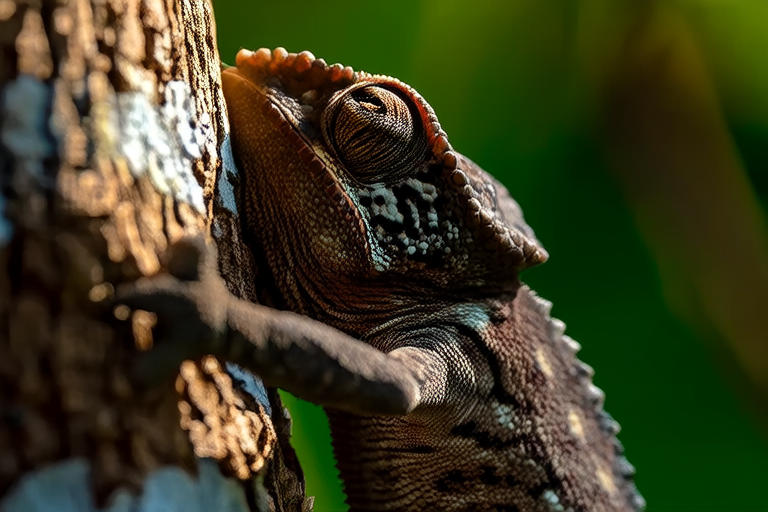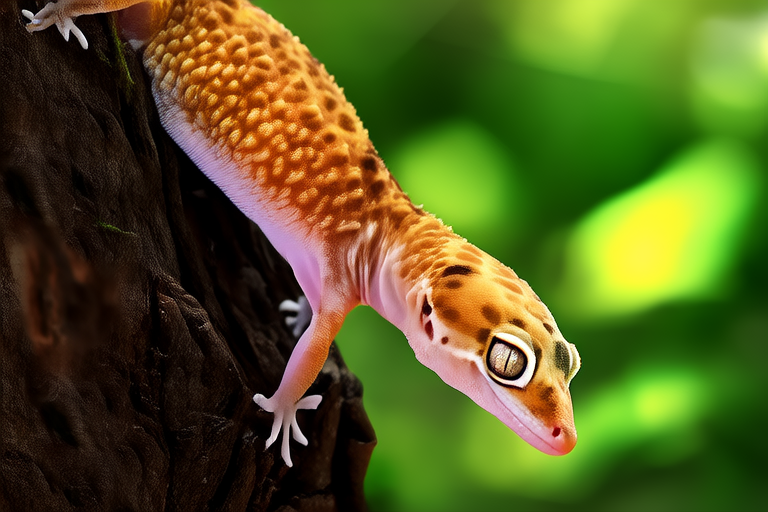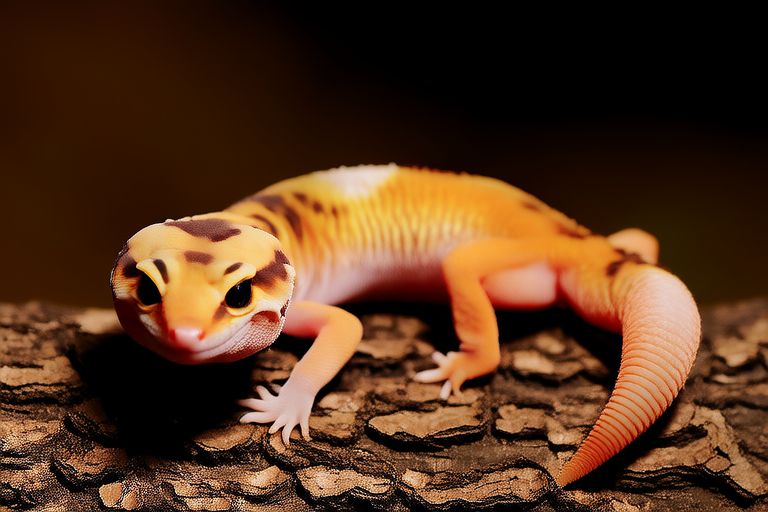
Chameleon Colors Explained: Why and How They Change
The ability of chameleons to change colors has long fascinated scientists and laypeople alike. These remarkable reptiles can alter their appearance to blend into their surroundings, communicate with others of their kind, or regulate their body temperature. But how do they manage this extraordinary feat? This article delves into the mechanisms behind chameleons’ color-changing abilities, providing a comprehensive understanding of the science and purpose behind these transformations.
The Mechanisms Behind Color Change
At the heart of a chameleon’s color-changing ability lies a complex system of specialized cells called chromatophores and iridophores. Chromatophores are pigment-containing cells that reside in the upper layers of the chameleon’s skin. These cells come in three types: xanthophores (yellow), erythrophores (red), and melanophores (black/brown). By expanding or contracting, these cells can mix and match pigments to produce a wide range of colors.
However, the true magic happens in the iridophores, which are located deeper within the skin. Unlike chromatophores, iridophores don’t contain pigments but instead consist of layers of platelets arranged like microscopic mirrors. When light hits these platelets, it reflects off them in various ways, creating iridescent hues that can shift depending on the angle of observation. This reflective property allows chameleons to produce blues, greens, and other shimmering colors that would be impossible through pigment alone.
Why Do Chameleons Change Color?
While many people assume that chameleons change color primarily for camouflage, this isn’t always the case. In fact, color changes serve multiple purposes, including communication, temperature regulation, and environmental adaptation.
Communication
One of the most fascinating uses of color change in chameleons is for communication. Males often display vibrant colors when competing for mates or defending territory against rivals. For example, male panther chameleons from Madagascar may exhibit intense shades of blue, red, and yellow during aggressive encounters. Females also use color changes to signal their receptivity to mating or to indicate that they are not interested in reproduction.
Color changes can also convey more subtle messages. Some chameleons use specific patterns or color sequences to express stress, submission, or even contentment. Understanding these signals requires careful observation and interpretation by both researchers and fellow chameleons.
Temperature Regulation
Another important function of chameleon color change is thermoregulation. By adjusting their skin color, chameleons can control how much sunlight they absorb or reflect. Darker colors tend to absorb more heat, helping cold-blooded chameleons warm up on cool mornings or after periods of inactivity. Conversely, lighter colors reflect more light, allowing chameleons to stay cooler during hot days.
This adaptive mechanism helps chameleons maintain optimal body temperatures, ensuring efficient digestion, metabolism, and overall health. It’s worth noting that not all chameleons rely equally on color changes for thermoregulation; some species may prefer behavioral adjustments such as basking or seeking shade.
Environmental Adaptation
Finally, chameleons use their color-changing abilities to adapt to their environments. Many species live in diverse habitats ranging from lush rainforests to arid deserts, each requiring different strategies for survival. In addition to blending in with foliage or rocks, some chameleons can change their appearance to match the texture of surfaces they encounter.
For instance, veiled chameleons found in Yemen and Saudi Arabia often display earthy tones that mimic the rocky terrain where they reside. Meanwhile, Jackson’s chameleons native to Kenya and Tanzania showcase green hues that help them disappear among leafy branches. These adaptations highlight the versatility and importance of chameleons’ color-changing capabilities.
Examples of Different Species and Their Unique Displays
Let’s explore several chameleon species known for their spectacular color displays:
Panther Chameleon (Furcifer pardalis)
Hailing from Madagascar, the panther chameleon is renowned for its striking patterns and vivid colors. Males can display an array of hues including bright reds, electric blues, and deep purples. The intensity of these colors varies based on the individual’s health, mood, and social interactions. Females typically have less pronounced markings but still show impressive variations in coloration.
Veiled Chameleon (Chamaeleo calyptratus)
Native to Yemen and Saudi Arabia, the veiled chameleon boasts intricate patterns featuring greens, browns, and yellows. Its distinctive horn-like protrusions above the eyes add to its intimidating appearance during territorial disputes. Veiled chameleons also exhibit rapid color shifts when threatened or excited, making them captivating subjects for observation.
Jackson’s Chameleon (Trioceros jacksonii)
Finding its home in Kenya and Tanzania, Jackson’s chameleon possesses trident-shaped horns and a predominantly green color scheme. This species demonstrates exceptional agility and speed, often using its vibrant green tones to remain hidden amidst vegetation. During breeding season, males engage in elaborate displays involving head bobbing and colorful exhibitions aimed at attracting females.
Meller’s Chameleon (Trioceros melleri)
Originating from East Africa, Meller’s chameleon stands out due to its large size and unique features. Adult males can reach lengths exceeding 60 centimeters, making them one of the largest chameleon species. They feature prominent casques atop their heads and display rich combinations of green, yellow, and black when agitated or courting potential partners. Their impressive size and striking appearance make them sought-after pets among enthusiasts worldwide.
Conclusion
The world of chameleon color changes is truly mesmerizing, offering insights into the intricate balance between biology, behavior, and environment. From the microscopic structures responsible for producing dazzling hues to the broader functions served by these transformations, there’s much to appreciate about these incredible creatures. As research continues, we gain deeper appreciation for the complexity and beauty inherent in nature.





